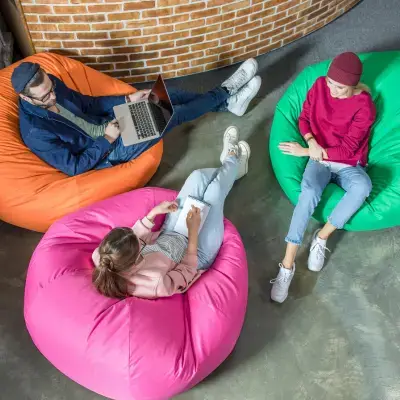Creating Classrooms That Shine with Student-Centered Learning Strategies
Creating a vibrant, student-centered learning environment is a transformative journey filled with excitement and possibility. As we consider how our learning spaces will welcome our learners back to school, let’s embrace the opportunity to reimagine our classrooms with strategies that celebrate and amplify student voice and choice while supporting each unique learner. This Edutopia video, “How to Set Up a Learner-Centered Classroom,” provides practical tips and real-world examples to help you visualize and actualize your ideas. It’s not just about setting up a space; it’s about cultivating a dynamic community where every student feels supported and inspired.
Collaborative Classroom Design
Another innovative strategy is setting up a Calming or Peace Corner—a designated space for students to retreat and self-regulate when they feel overwhelmed. This is also referred to as a Calm Corner, Reflection Station, or Mindfulness Area. Whatever you call it, make sure that this area is a positive, reflective space rather than a punitive one, allowing students to recharge and return to learning with a clear mind. Read about Incorporating a Calming Corner Into Station Rotations for dozens of ideas to get you started. Bridging Apps even has a list of helpful apps for students to help them regulate and calm down for early elementary, upper elementary, middle school, and high school.

Developing a Social Contract
Building a classroom community starts with establishing clear expectations. Instead of imposing rules, work with your students to create a social contract or a set of norms. This process gives them a sense of ownership and accountability. Once the contract is agreed upon and signed off by your students, display it prominently in the classroom as a constant reminder of their shared commitments.
Creating a Calming Corner
Another innovative strategy is setting up a Calming or Peace Corner—a designated space for students to retreat and self-regulate when they feel overwhelmed. This is also referred to as a Calm Corner, Reflection Station, or Mindfulness Area. Whatever you call it, make sure that this area is a positive, reflective space rather than a punitive one, allowing students to recharge and return to learning with a clear mind. Read about Incorporating a Calming Corner Into Station Rotations for dozens of ideas to get you started. Bridging Apps even has a list of helpful apps for students to help them regulate and calm down for early elementary, upper elementary, middle school, and high school.
Routine Discussions and Active Listening
Integrating daily routines for open discussions can significantly enhance student engagement. Morning meetings, for example, provide a structured opportunity for every Two young students happily engaged in reading together, fostering a learner-centered classroom environment student to voice their thoughts and listen to others. For older students, Socratic Circles can foster deeper conversations and respectful debate, promoting critical thinking and empathy.

Empowering Student Voices
Above all, empowering student voices and supporting every student is key to a thriving classroom environment. Sharing the floor with students and encouraging open dialogue helps them feel heard and respected. Whether you plan for this time or allow it to happen organically, we can all benefit from putting energy toward hosting discussion spaces rather than leading them. This approach not only builds their confidence but also strengthens the classroom community.
Implementing these practices can transform your classroom into a dynamic and supportive space where every student thrives. Let’s embark on this journey together, creating classrooms that are not just places of learning, but communities where joy, creativity, and connection flourish.
